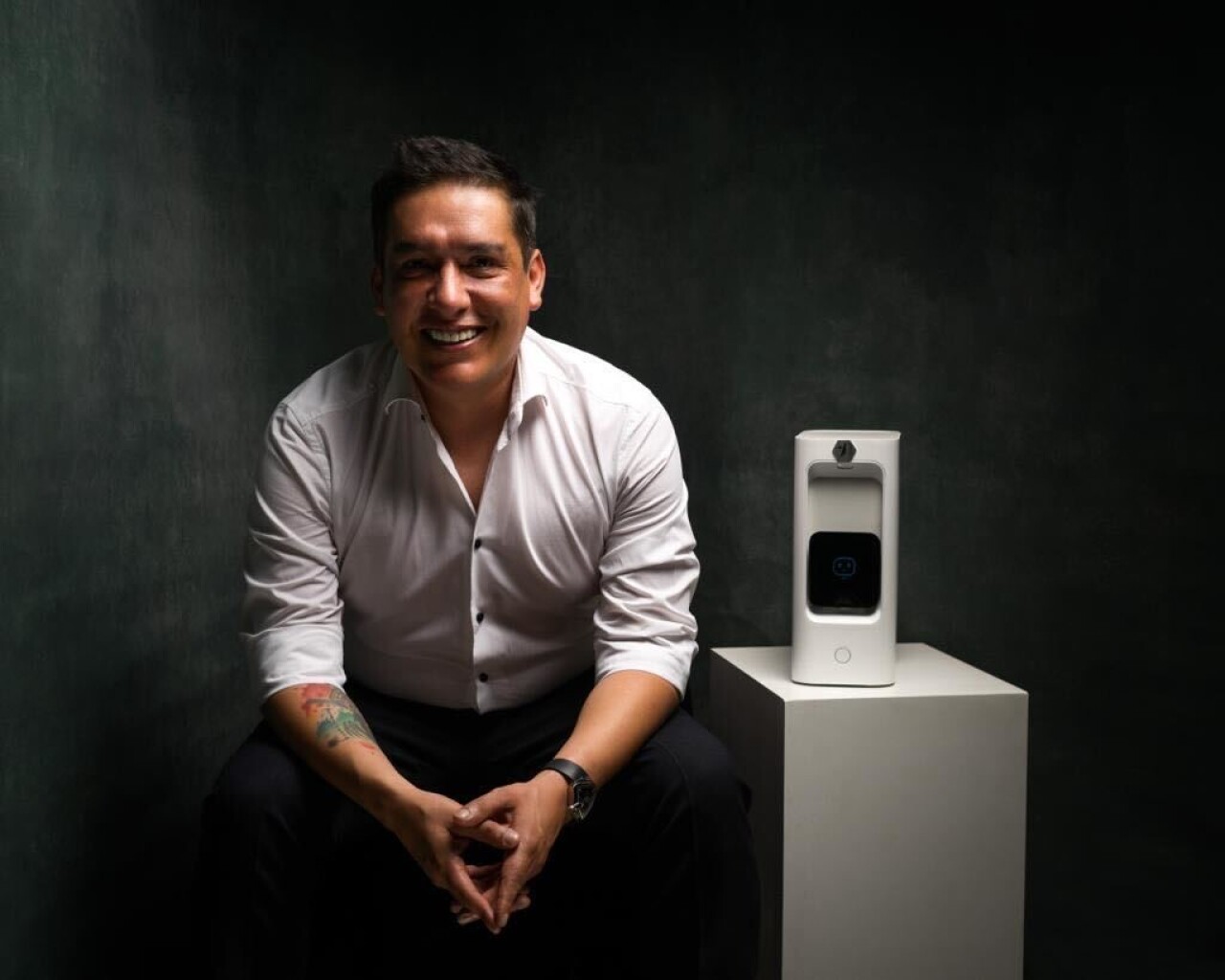Although there are larger versions, Dr. García, who was also part of the AH1N1 influenza detection group set up by the capital’s government in 2009, is clear: “The idea was always to be able to miniaturize a laboratory and take it home so that we all had it, just as we now have a digital assistant”.
How does NanoLuci work?
NanoLuci is a device that doesn’t take up more space than a cereal box. García details that it does not have any type of key to facilitate its use, since it can be used by anyone who follows the instructions of the digital assistant that it has incorporated, which also shows the result at the end of the test.
To carry out a test, it is only necessary to enter a fluid in a cartridge of the disease that you want to detect and incorporate it into the machine, which takes between 10 and fifteen minutes to deliver a verdict. The specialist emphasizes that no technical intervention is required for the transfer of liquids, since anyone can do it.
Although it delivers an understandable result for users, it also has the ability to extract data and send it via email so that a specialist can analyze it in greater depth.
The doctor points out that he has several pre-loaded tests in his system, so all one has to do is select which one to perform, enter the saliva sample in a special cartridge for that disease, and that is how the result is obtained.
With this device, HIV tests can be carried out and he comments that they are developing a test to detect which variant of the virus a person may have, so that the treatment is more precise and the patient does not receive a “retroviral cocktail to see how they work for him.”
He even mentions that there are also tests to detect more common or less dangerous diseases, such as salmonella or E. Colli, as well as veterinary medicine tests, to detect parvovirus in pets.
Make medicine accessible
The installation of a traditional test laboratory represents millions of pesos for whoever wants to establish it, however, García mentions that the price of this device will be around 70,000 to 80,000 pesos. “There will be people who can have it at home, but the idea is to make it available in community centers because the investment is not that high,” he stresses.
On the other hand, the price of the cartridges for each analysis will be between 150 to 300 pesos, which makes access to health in Mexico more accessible, since it should be remembered that during the pandemic, a PCR test was worth more than 1,000 pesos and the result was delivered within a day.
At the moment, this technology is not yet available to the general public, but García details that they are already carrying out the necessary procedures in terms of health verification from the Federal Commission for the Protection against Sanitary Risks (Cofepris), as well as the endorsement of the Institute of Epidemiological Diagnosis and Reference (InDRE). These procedures will take a few months and it is expected that the device can be sold from November.
The present and future of medical technology needs talent
Héctor Orellana, president of the Mexican Association of Innovative Industries of Medical Devices (AMID), explains that medical technology is currently in a period of evolution in the devices used by doctors to find new ways to help people.
Among the most important trends in this field are the use of Artificial Intelligence to process a greater amount of data, as well as the miniaturization of devices to put them into operation from remote places and that are increasingly personalized, such as a telephone.
“Mexico has state-of-the-art technology,” says Orellana and complements by saying that the country has an installed base of more than 160,000 jobs that are responsible for producing these devices, as well as 40 specialized manufacturing plants and is the sixth exporter of medical devices in the world. world.
According to AMIID figures, this industry exports around 5,000 million dollars a year, which makes Mexico the main exporter in Latin America and the eighth in the world; however, at the national level it barely has a market of 30,000 million pesos, which is why local consumption needs to grow.
In this sense, he highlights that there are not enough specialists trained in these technologies in the country, so the next step for the industry is to ensure talent, in addition to constantly training them so that they are up to date with the latest advances and can be applied in the society.


![[Img #74664]](https://thelatestnews.world/wp-content/uploads/2024/12/James-Watson-The-controversial-genius-behind-the-double-helix-150x150.jpg)








![[Img #74664]](https://thelatestnews.world/wp-content/uploads/2024/12/James-Watson-The-controversial-genius-behind-the-double-helix-300x200.jpg)

